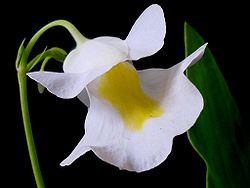| Utricularia subg. Utricularia | |
|---|---|
 | |
| Utricularia alpina , a species in subgenus Utricularia, section Orchidioides . | |
| Scientific classification | |
| Kingdom: | Plantae |
| Clade: | Tracheophytes |
| Clade: | Angiosperms |
| Clade: | Eudicots |
| Clade: | Asterids |
| Order: | Lamiales |
| Family: | Lentibulariaceae |
| Genus: | Utricularia |
| Subgenus: | Utricularia subg. Utricularia |
| Sections | |
Avesicaria | |
Utricularia subg. Utricularia is a subgenus in the genus Utricularia . [1]